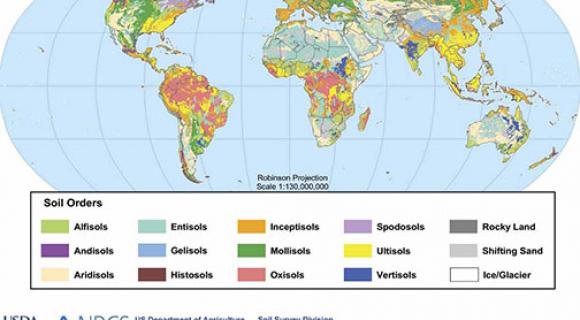- Body
Soil is the basic component of rangeland ecosystems and is associated with nearly all processes that occur within the ecosystem. It provides a medium to support plant growth. It is also the home for many insects and microorganisms. It is a product of parent material, climate, biological factors, topography, and time. The soil formation process is slow, especially in arid and semiarid climates. It is believed to take several hundred years to replace an inch of top soil lost by erosion. Rangeland soils, as those found in the Great Plains and Palouse Prairie, have been extensively converted to agricultural crop production. Remaining rangeland soils may be rocky, steep, salt affected, or otherwise not very productive compared to prime agricultural lands.
Any decision made by a rangeland manager must consider the impacts of that decision on the soil. It is important to know the type of soil present on rangeland and to understand how it affects both the kind and amount of forage produced and the type of management that is possible or appropriate. The chemical and physical characteristics of a soil determine: its ability to furnish plant nutrients, the rate and depth of water penetration, and the amount of water the soil can hold and its availability to plants.
Get reliable rangeland science
Toggle Search
